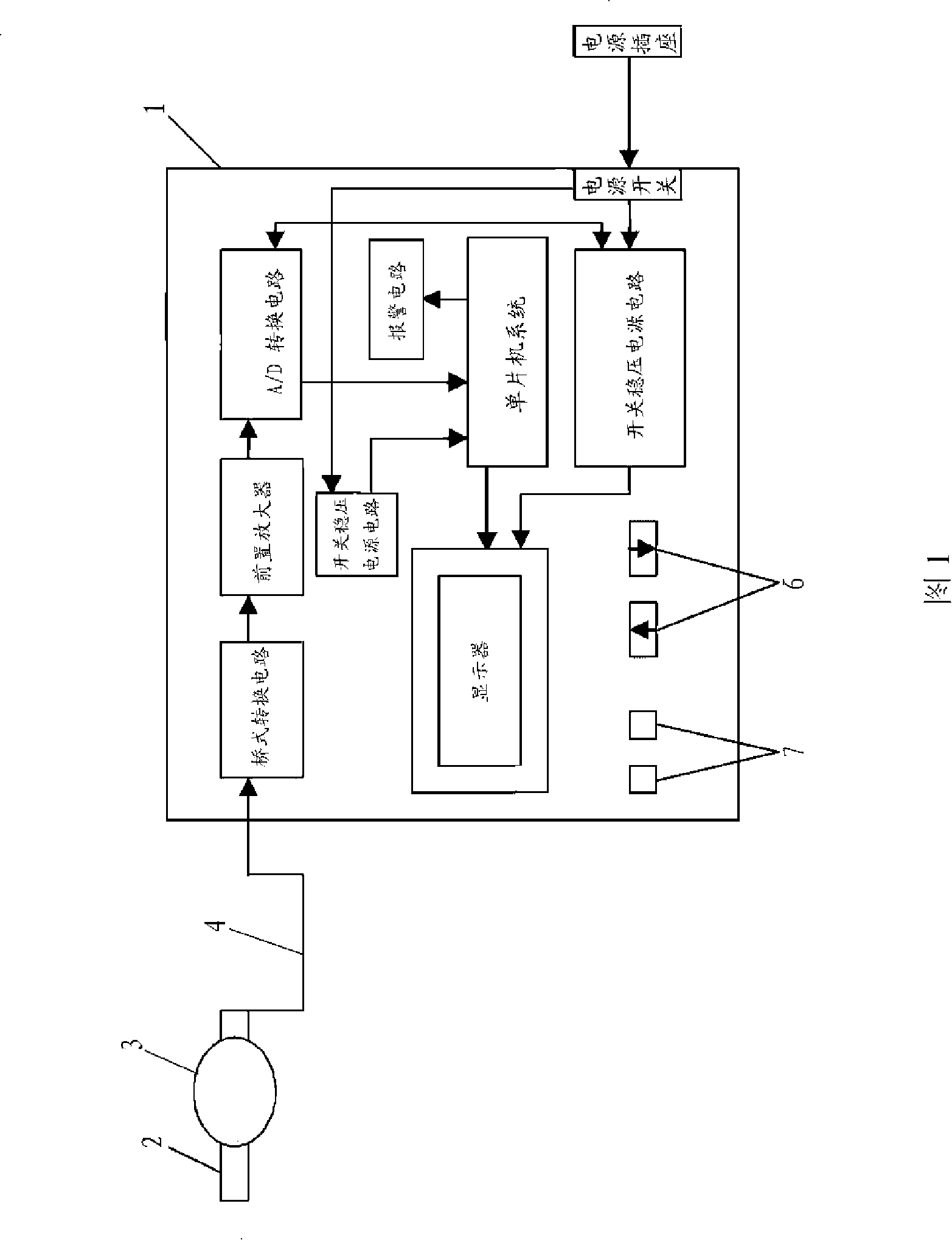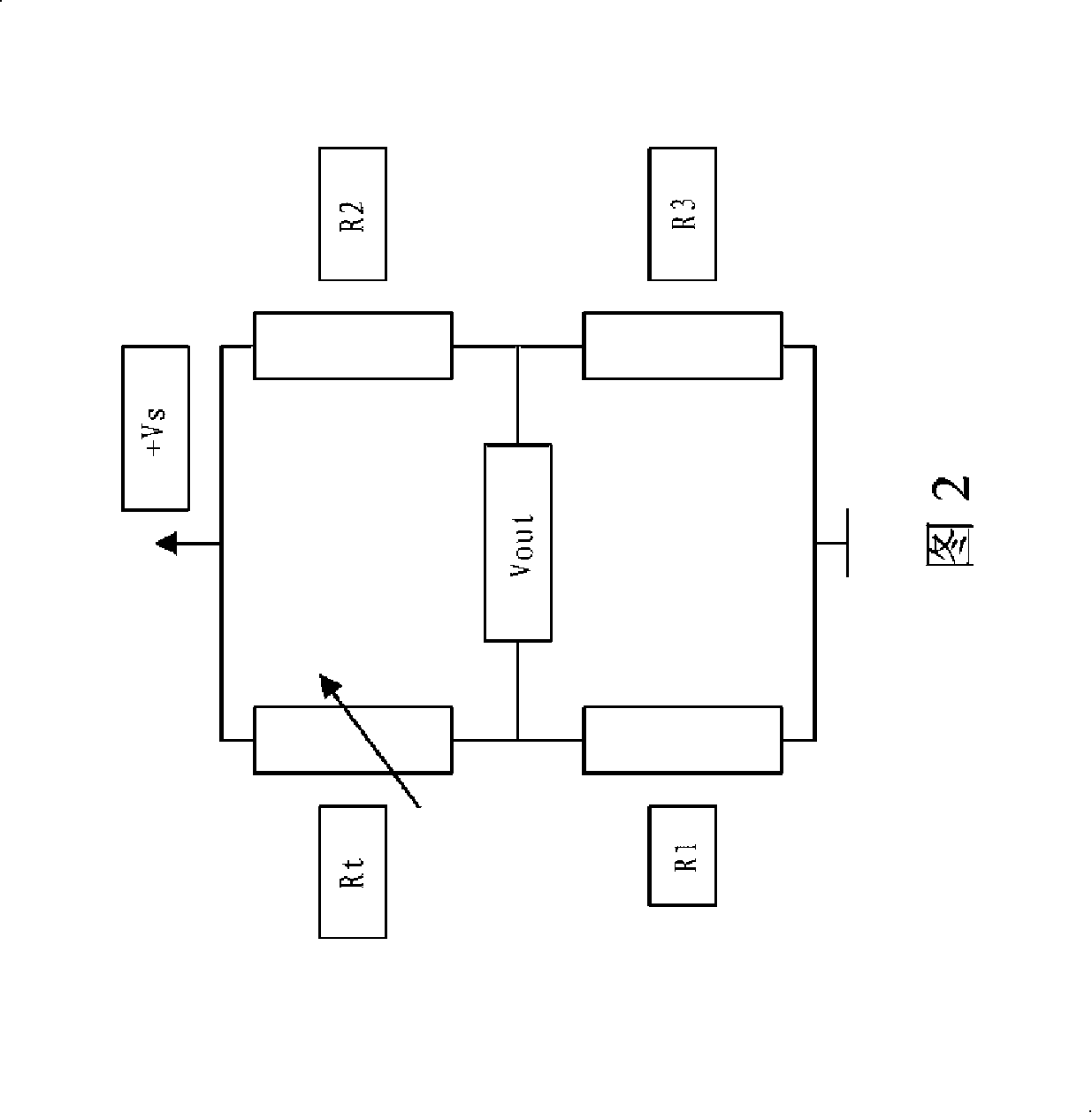Non-invasive blood sugar detecting instrument
A blood glucose detector and blood glucose value technology, applied in the field of blood glucose detectors, can solve the problems of complex structure and poor measurement accuracy of blood glucose detection equipment, and achieve the effects of avoiding infection risk, convenient operation and low cost.
- Summary
- Abstract
- Description
- Claims
- Application Information
AI Technical Summary
Problems solved by technology
Method used
Image
Examples
Embodiment 1
[0136] Embodiment 1 Referring to Fig. 1, Fig. 1 is a schematic diagram of the structure of a desktop non-invasive blood glucose detector. The detection site is the ear hole, and the temperature detection head is preheated by one ear, and the formal detection is performed by the other ear hole. It includes a shell 1, a movement inside the shell and a probe connected to the shell, and is characterized in that:
[0137] There are operation buttons 7 and input keys 8 for invasive detection of blood sugar level for calibration on the surface of the shell; there are two input keys for invasive detection of blood sugar level for calibration, marked with up and down arrows respectively. By pressing the button, the invasive blood glucose value can be input into the instrument for calibration.
[0138] The movement consists of the following components connected in sequence:
[0139] (a), the preamplifier used to amplify the weak temperature electrical signal input by the probe head. T...
Embodiment 2
[0158] Embodiment 2, see Fig. 3, Fig. 3 shows another design of non-invasive blood glucose detector. It differs from the design shown in Figure 1 only in that a battery 8 is used instead of the AC power source. The corresponding switching power supply circuit 6 also needs some changes to adapt to the feature that the battery voltage keeps dropping during use. Ready-made voltage regulator integrated circuits can be purchased for assembly, and such products are available in the market.
Embodiment 3
[0159] Embodiment 3, refer to FIG. 4, which shows another non-invasive blood glucose detector of another design. It differs from the previous two in that the temperature probe is not heated by an ear to achieve the desired initial temperature, but controlled by a heating-cooling unit built into the instrument. 14 among the figure is heating-cooling unit, and it is controlled by single-board computer system 4, is powered by regulated power supply 6, and utilizes semi-conductor energization to generate heat or cool down. Such semiconductors can be purchased assembled.
[0160] The fourth non-invasive blood glucose detector design is different from the previous three in that the temperature probe is changed into a patch form, which is attached to the skin of a certain part of the body (such as the armpit), so that the instrument is uninterrupted 24 hours a day Monitor the temperature changes of the patches. Instead of checking body temperature every once in a while, it monitors...
PUM
 Login to View More
Login to View More Abstract
Description
Claims
Application Information
 Login to View More
Login to View More - R&D
- Intellectual Property
- Life Sciences
- Materials
- Tech Scout
- Unparalleled Data Quality
- Higher Quality Content
- 60% Fewer Hallucinations
Browse by: Latest US Patents, China's latest patents, Technical Efficacy Thesaurus, Application Domain, Technology Topic, Popular Technical Reports.
© 2025 PatSnap. All rights reserved.Legal|Privacy policy|Modern Slavery Act Transparency Statement|Sitemap|About US| Contact US: help@patsnap.com



